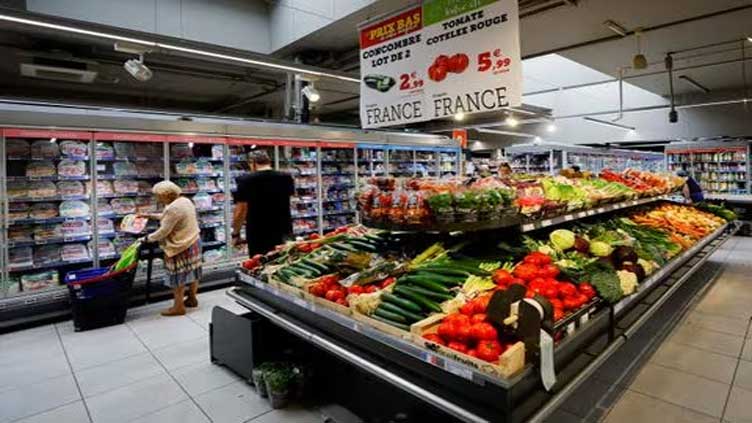Euro zone inflation jump cools case for ECB rate cuts

Business
Euro zone inflation jump cools case for ECB rate cuts
FRANKFURT (Reuters) - Eurozone inflation jumped as expected last month, supporting the European Central Bank’s case to keep interest rates at record highs for some time, even as markets continued to bet on a rapid fall in borrowing costs.
Inflation across the 20-nation bloc jumped to 2.9% in December from 2.4% in November, just shy of expectations for a 3.0% reading, mostly on technical factors, such as the end of some government subsidies and low energy prices getting knocked from base figures.
The data is in line with the ECB's prediction that inflation bottomed out in November and will now hover in the 2.5% to 3% range through the year, well above its 2% target, before falling to target in 2025.
Still, figures suggested that the structure of inflation is changing and while base and fiscal effects could yank around the headline figure, overall pressures may be easing.
The focus now turns to how wage settlements and global political tensions are impacting prices, two factors that could have longer-term consequences.
Wage deals are finalised in the first quarter in much of the euro bloc but data is not available until May, so policymakers will need perhaps until mid-2024 to get a reliable picture.
Geopolitical tensions are harder to predict. While the war in Gaza has had little effect on energy prices so far, the more recent disruption of shipping via the Suez Canal has pushed up transportation costs.
This in itself is not a big factor for prices but it could lift inflation if goods take longer to reach Europe over an extended period and shortages develop.
"Where higher costs are shipping specific, as at the moment, the inflation impact is very small," Paul Donovan at UBS Wealth Management said.
"It is not the value of goods shipped, but the changing cost of shipping the goods that matters. Globally, shipping by sea accounts for less than 0.3% of global economic activity."
EXPECTATIONS
The inflation jump comes as investors and policymakers appear to be drawing different conclusions about price trends and their implications for interest rates.
Investors are betting that the ECB will cut rates six times this year with the first move coming in March or April while policymakers argue that it might take until mid-2024 to gain the confidence that inflation is indeed under control.
"Inflation is far from being defeated," Commerzbank economist Christoph Weil said. "The ECB is likely to cut its key interest rates significantly less than the market currently expects."
A key source of the divergence in views is that the ECB's own inflation projections have been off for years, suggesting that the bank does not have a full understanding of price-setting behaviour in exceptional circumstances.
During the post-pandemic inflation surge, the ECB first predicted just a transitory rise in prices, then a shallower peak, and finally a much slower reversal. This led some policymakers to raise their focus on reported data and lower the emphasis on projections.
Nordea economists Anders Svendsen and Tuuli Koivu think the ECB is wrong again and they see inflation below 1.5% by the end of the summer, well below the ECB's own projections.
"If inflation prints continue to come in on the soft side, risks of an earlier cut and/or a faster pace of cuts compared to our current baseline of quarterly 25bp rate cuts increase," they said, adding that the first cut could come in June.
Investors argue that the ECB is too optimistic about growth and also point to a sharp drop in producer prices -- down 8.8% in November -- as evidence of cooling price pressures.
Markets are also betting on aggressive rate cuts from the U.S. Federal Reserve and investors think that once the world's biggest central bank moves -- in March or May -- the ECB will want to move in sync.


